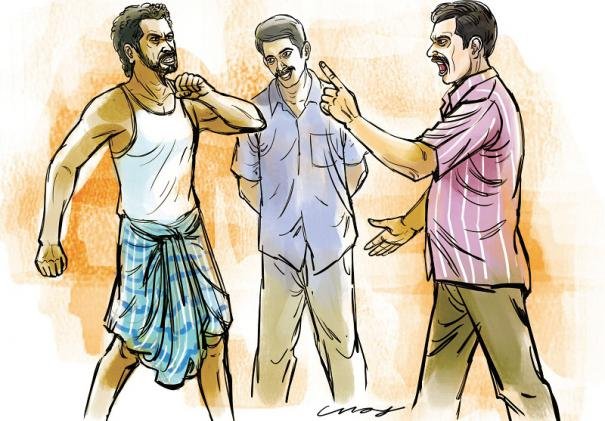Modi Mela – Post Election Developments
The complete conquest of the Indian parliament by finance capital is almost complete. The victory of the BJP, the Hindu chauvinist Bharatiya Janata Party, with 282 seats, has utterly defied what had become the norm in Indian politics – coalitions with reliance on regional alliances.
Although it was in fact the National Democratic Alliance (NDA) that won 336 seats out of the 543 available, there is no doubt which party will dictate governance. This is a historic first – with the centre in the control of one party and that party not being Congress.
In some northern states (Jharkhand, Delhi, Goa, Gujarat, Himachal Pradesh, Rajasthan, Uttarakhand) no other party managed to win even a single seat. Even in the southern states the BJP did not perform as badly as expected in terms of the number of votes they obtained.
On a national basis, no other party managed to obtain more than 10% of the vote, the requirement to form an official opposition. The Congress Party has been pushed to the level of a regional party with a mere 44 seats. They couldn’t even manage a double digit result in any state. But, given their immersion in the immense corruption scandals, their fall was expected.
It is no surprise that 13 out of the 15 ministers who stood for re-election lost their seats. Some, like ex-finance minister P Chidambaram, saw the writing on the wall and ducked down. He did not even contest the election. Chidambaram claimed during the election in a televised interview that “Narendra Modi’s politics border on fascism”. He went on to say that India doesn’t need ‘another Hitler or Mussolini’ to solve its problems.
But what he didn’t say is that Modi’s politics, a vicious neoliberal offensive, have their origin in India with the Congress Party. The outgoing Congress Prime Minister Manmohan Singh spearheaded it when he was the minister for finance.
What Modi represents, in economic terms, is simply a speeded-up implementation of the Congress-led government’s pro-business policies. Leave aside Chidambaram’s unscientific use of the term ‘fascism’ and attempted fear-mongering to ensnare votes for Congress in the dying days of the election period. And how can he and Congress expect the Indian working class and the poor masses to forget the scandals involving key leaders and partners of the Congress party?
The enormity of the corruption disgrace is still in everyone’s immediate memory. Ordinary people struggle to work out how many zeroes are needed to express the massive amounts of money plundered. Big corporations continue to expect to take away billions of rupees in tax avoidance. Without doubt Modi will embrace ultra-relaxed regulation of big corporations. Of course that’s the difference – it will no longer be that India has a ‘pro-big business’ government – but it will have a fully signed-up representative personified in ‘Modi is in Charge’.
But the question is: how did this happen in a country that is home to two-thirds of world poor? In a country that has in the last years alone seen massive anti-corruption movements, anti-nuclear moments, women’s rights movements and various other movements, and a general strike that involved over 100 million workers? Have all the activists, many freshly minted in response to the continental-size scandals, become Hindu fundamentalists overnight? A few facts could reveal some of the processes that are taking places under the surface.
The rhetoric of hope of a so-called ‘Shining India’, and of a ‘rising middle class’, with a return to 10% economic growth rates as seen in the peak times of the Indian economy, are no more. The most under-reported story is the fall in the economic growth rate, now dangling between 3% and 4%. A certain speeding up in the country’s urbanisation did create a small but significant well-to-do middle class during the boom times.
Huge hope of a future of jobs and prosperity has been created among youth in particular. A staggering 65% of the Indian population is under the age of 35. Half the population is under 25. The young Indian masses had a taste of a better life, but more importantly developed the high hope of a decent life. But all the hope of this generation now hangs in the air as the impact of the world economic crisis is felt across India. Millions of young people now entering the job market will only find an utterly bleak prospect. According to one calculation, ten million jobs need to be created every year to 2040 to accommodate the 300 million young workers moving into the job market. Modi overwhelmingly won the vote among young people, with the majority citing job creation as the motivating factor.
What will happen to Modi’s support if he cannot deliver on this? The last remnants of ‘hope’ will be destroyed in the coming years if the economy continues to perform so poorly. Modi, however, is hoping to deliver a miracle with one of the most-used tricks in the capitalist book – a privatisation offensive.
The banks have got to go. So too all the resources in the beautiful mountains and valleys of India. The very landscape will have to change. Why? Walmart wants to sell ‘packaged curry’ to the ‘masses’. A takeover by international retail corporations is an almost inevitable consequence of the continuation of capitalism in India. But Modi promises to push it through no matter the consequences. Already the bank union is reacting and calling for a strike. There will emerge a resistance.
But pro-capitalist economists are aware of the potential for opposition from the disappointed masses so they are warning Modi not to hesitate or employ ‘caution’ like that the Congress government did. They are egging him on to bulldoze through his neoliberal agenda, as Thatcher did or akin to the ‘shock therapy’ employed in Russia in the early 1990s. However, it’s a “mission impossible” as the real economy and the so-called ‘buying power’ continue to suffer. More than 69% of the Indian population are acutely poor.
The vote for Modi is in no way a vote for his policies or for a turn towards ‘Hindu fundamentalism’. The BJP, of course, will try to use every opportunity to whip up Hindu nationalism. Modi’s base can only be strengthened by this force, a minority force at this stage.
Amit Shah, known as Modi’s “henchman” and accused of being the perpetrator behind the horrible violence against the Muslim population in Gujarat, was stationed in Uttar Pradesh throughout the election. Communal violence took place in UP in the weeks before the election which aided the consolidation of the so-called ‘Hindu’ votes for the BJP. The result was that 73 out of UP’s 80 seats fell to the BJP – up by a staggering 63 seats. Significantly Dalit votes were won on a ‘Hindu nationalist’ basis and by the BJP drawing in some ‘Hindu’ Dalit leaders. The potential for further riots and attacks on religious minorities in places like UP and Bihar cannot be ruled out. Without consolidating this support Modi’s hopes of either implementing the offensive he promised big business – or lasting until the next election – will not come to pass.


















